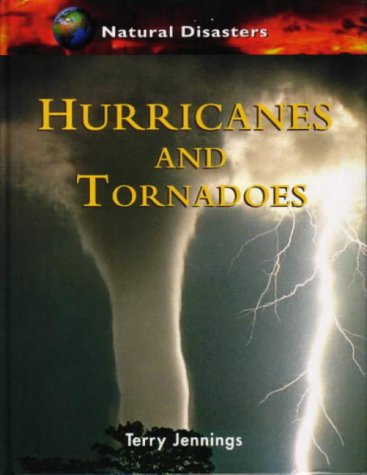-
Tsunamis
Louise Park
Library Binding (Black Rabbit Books, Feb. 28, 2008)Created especially for readers in the elementary grades, this series explains in clear terms the science and hardship of historic natural disasters, and to aid with school reports, includes a chronology, website addresses, glossary, index, and suggestions for further reading. Q
Q
-
Hurricanes and Tornadoes
Terry Jennings
Paperback (Chrysalis Books, Jan. 16, 2003)None
-
Hurricanes and Tornadoes
Terry Jennings
Hardcover (Belitha Press Ltd, Jan. 1, 1999)None
-
Volcanoes
Catherine Chambers
Paperback (Heinemann, March 15, 2001)What does it mean when a volcano is said to be dormant? Why was the island of Monserrat evacuated in 1997? How can scientists predict when a volcano will erupt? Find the answers to these questions and many more in Disasters in Nature, a new series that examines the causes and effects of natural disasters. Each title looks at a single type of natural disaster that can have devastating effects on the natural and human worlds. Each subject is introduced with a case study of one important example of its type. The disaster is examined in detail, looking at its causes and effects. You will also see how scientists measure, record, and try to predict each type of disaster. Finally, each book analyses how we hear about natural disasters through the media, and how people's actions can make these disasters worse. X
X
-
Natural Disasters - Hurricanes
Kris Hirschmann
Hardcover (Lucent Books, July 10, 2001)Hurricanes are among nature's most powerful -- and most destructive --forces. This book takes a scientific look at how hurricanes form and travel, as well as their devastating effects on land, buildings, and people. The human response to hurricanes, including tracking techniques, preparedness policies, victim relief/rescue, and failed prevention efforts, is also addressed. X
X
-
Hurricanes
Catherine Chambers
Library BindingNone P
P
-
Landslides
Anne Ylvisaker
Paperback (Capstone Press, Sept. 1, 2000)Describes how and why landslides happen, the damage they cause, ways to avoid and survive this natural disaster, and famous landslides of the past. Q
Q
-
Forest Fires
Laura Purdie Salas
Library Binding (Capstone Press, Sept. 1, 2001)Explains why forest fires occur and describes the techniques used to fight them. Also informs on the damage forest fires inflict, their role in the the natural cycle of a forest, and highlights some famous forest fires. S
S
-
Earthquakes
Catherine Chambers
Library Binding (Heinemann/Raintree, Nov. 1, 2000)Examines earthquakes, discussing what causes them, how they are measured, and how they can cause tsunamis. P
P


